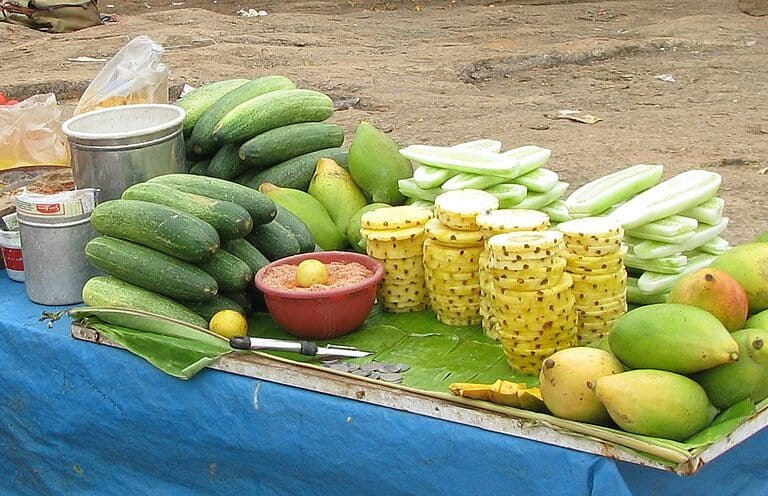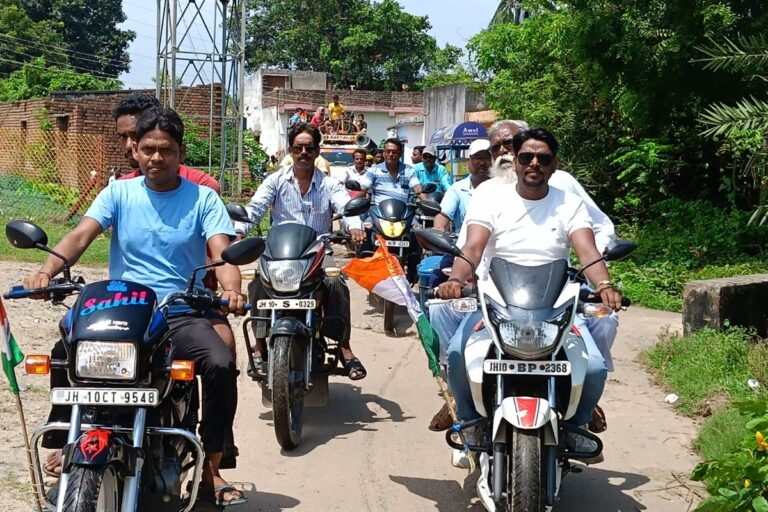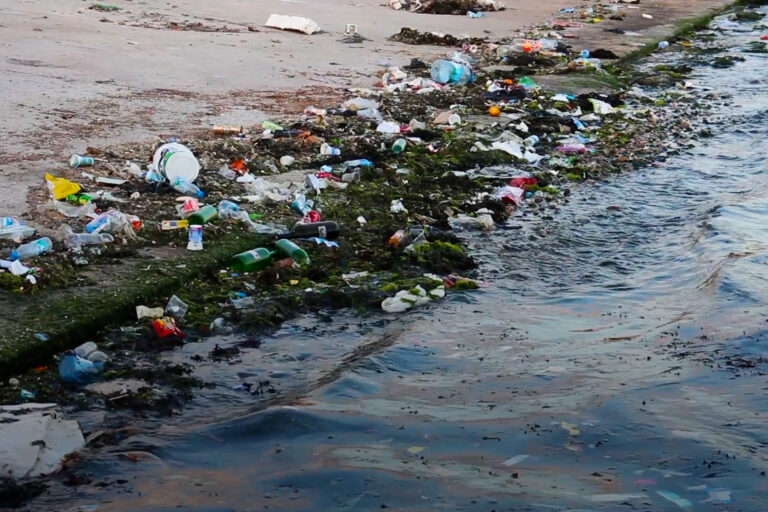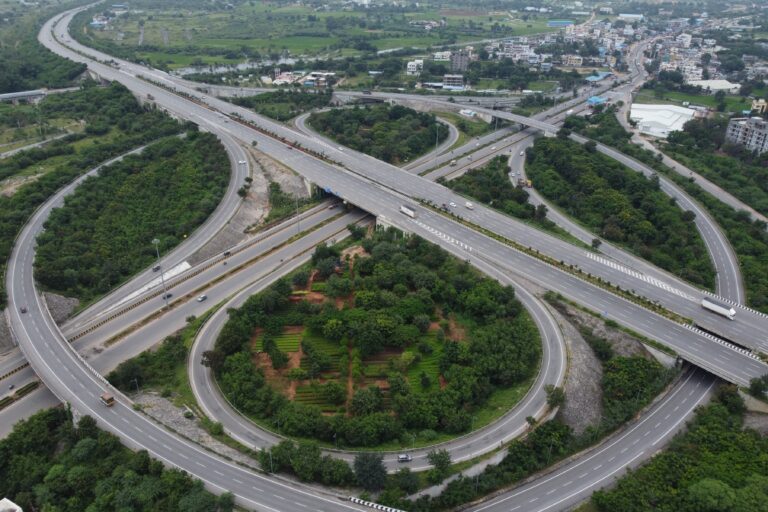- More frequent heat waves in India could jeopardise its progress towards Sustainable Development Goals.
- There is an urgent need to improve extreme weather impact assessment methods.
- Most heat action plans in India are not designed for the local context.
Killer heat waves are projected to worsen across India, warn recent reports, cautioning that the current method of analysing the impacts of these extreme events needs to be improved. The country’s heat action plans are not tailored to the local context, have an oversimplified view of the hazard and are inadequate in identifying and targeting vulnerable groups.
In India, heat waves usually occur in the pre-monsoon months from March to June and are prevalent majorly in two areas – the central and north western India, which is called the “heat wave zone”, and on the east coast of India, mainly in Andhra Pradesh and Odisha. The frequency of heat waves is higher in the heat wave zone than on the east coast of India.
The Intergovernmental Panel on Climate Change (IPCC) model projections indicate an increase of about two heat waves and heat wave duration by 12-18 days by 2060. Heat waves could also spread to southern India, where no heat waves are currently reported.
The India Meteorological Department (IMD) considers only maximum temperatures for defining heat waves. A heat wave occurs “if the maximum temperature of a station reaches at least 40°C or more for plains, 37°C or more for coastal stations and at least 30°C or more for hilly regions”.
The IMD’s April 2023 report on heat and cold waves, in which the authors discuss impacts and adaptation issues, warns that “with unchecked global warming, the probability of compound extremes such as the simultaneous occurrence of droughts and heat waves is also likely to increase.”

A recent report by researchers from the University of Cambridge, U.K., the California Institute of Technology, Pasadena, U.S. and the Yale University, U.S., highlights a new approach to evaluating the impacts of heat waves in India.
The Indian government relies on its ‘climate vulnerability index’ (CVI), which may underestimate the impact of heat waves on the country’s developmental efforts, the researchers said. They, instead, evaluated impacts using a combination of the heat index (HI) with CVI, and it showed that “more than 90% of the country is at extremely cautious or dangerous levels of adversely impacting adaptive livelihood capacity, food grains yield, vector-borne disease spread and urban sustainability.”
Their analysis of Delhi’s urban heat risk shows that heat waves will “critically hamper’ the progress of the UN sustainable development goals (SDGs) at the urban level.
Linking HI with CVI identifies more of India’s vulnerability and “provides an opportunity to rethink India’s climate adaptation policies” through international cooperation in designing vulnerability assessment methodologies, they reported.
Their results and conclusion emphasise “the urgent need to improve extreme weather impact assessment” by combining multiple sets of information that can account for the co-occurrence and collision of climate change events and SDG interventions that are not linked to climate change, they said.
“We found India’s present climate vulnerability measure underestimates the impacts of heat waves and used a ‘real feel’ measure called heat index to demonstrate that more than 90% of the country is under danger zone of extreme heat,” Ramit Debnath, a researcher and one of the authors of the report, told Mongabay India.
“We are not comparing CVI with HI, because these are like apples and oranges,” says Debnath. “But what we do is show how a person actually would feel under extreme heat by combining air temperature with relative humidity, therefore, shaping a physical risk measure for heat waves.” The government’s CVI “is a robust measure and is built on the Inter-Governmental Panel on Climate Change (IPCC’s) Special Report on Managing the Risks of Extreme Events and Disasters to Advance Climate Change Adaptation (SREX) framework, but it needs to be updated to include physical risks from hazards like heat waves.”
“India, being a geographically and socio-cultural country, poses a challenge in designing holistic climate action and adaptation plans,” adds Debnath. There is a significant data gap at district scale, both in terms of quality and quantity. This climate data element is extremely crucial to start building effective climate vulnerability assessment measures, he says.
M. Rajeevan Nair, Ministry of Earth Sciences distinguished scientist at the National Centre for Earth Science Studies (NCESS), Thiruvananthapuram, says that he agrees with the general conclusion of the researchers in PLoS Climate, that using either the heat index or the climate vulnerability index without considering other SDG interventions may not be appropriate for an effective extreme weather impact assessment. In this paper, the authors argue that heat wave impacts can hinder or reverse the country’s progress in fulfilling the sustainable development goals (SDGs). Nair, one of the authors of the IMD report, said, the currently available CVI does not take into account non-climate drivers for impact assessment.
Inadequate heat action plans
Meanwhile, a policy brief from the Centre for Policy Research, a New Delhi-based think-tank, which analysed 37 heat action plans (HAPs) spanning nine cities and 13 districts across 18 states in India, says that most HAPs are not built for local context and have an oversimplified view of the hazard; and nearly all HAPs are poor at identifying and targeting vulnerable groups. Most heat action plans are underfunded, have weak legal foundations, and are insufficiently transparent, says the CPR report. Also, capacity building is sectorally-targeted.
None of the heat action plans reviewed explore policy integration across all listed interventions, the report says. Many actions in agriculture, water, housing, infrastructure, and urban design, for example, could usefully be linked to existing policies to unlock capacity and finances.

Heat action plans “have emerged as India’s primary policy instrument to deal with the health and economic consequences of heat waves,” said Aditya Pilai, an associate fellow with the Initiative for Climate, Energy and Environment (ICEE) at CPR and author of the policy brief. “They are also immensely complicated to design and implement, and many jurisdictions are coming up with these plans right now,” he said. This prompted the CPR team to analyse heat action plans, which might be useful to those actually building heat plans right now.
Adapting to climate change requires immense amounts of state capacity in different forms – “governments must at once be able to read the science and understand what it means for them, figure out who’s going to be most affected, and summon the material resources to make changes to physical and social structures,” points out Pillai. And all of this is happening at hyper-local levels. The heat action plans are just one example of what it will take to insulate the country from climate impacts.
The second big question is financing, says Pillai. Climate change adaptation has a different economic equation than mitigation, for example, installing renewables, where the private sector has a big role to play. He points out, “The economic promise of adaptation is in forestalling potential future damage – and that’s hard to monetize for private capital.” He adds, “So how does one finance things like heat plans and district disaster management plans? Public finance and expanded insurance mechanisms will play a role, but one suspects that we’d have to think a lot harder about how we climate-proof the country.”
Nair describes the results in the CPR report as “very revealing.”
“While there is a scope for further strengthening of HAPs, the NDMA report claims that the death toll due to heat waves has reduced substantially during the recent years due to effective heat wave action plans,” says Nair.
Pillai says that it is important to note that adapting to extreme events and slow-onset climate events “is really hard for any country.” Heat action plans are a new area of public policy and are constantly evolving. “I think many of the gaps this report notes can be filled quite fast, with a focused effort, and serve as a template for other vulnerable countries in the Global South.”
Pillai says that some of the gaps are on the cusp of being filled – for example, the incorporation of fairly sophisticated vulnerability assessments in new heat action plans “that will come out shortly. So, there’s much to look forward to and be hopeful about. This story is just being written.”
Urban sustainability
The urban sustainability should not be overlooked as these areas are further affected by urban heat island effect, affecting low-income population tremendously, says Debnath. Urban policy and planning guidelines should start to include extreme heat measures and linking it with health, water and energy services, he says. “These services are already strained for most of the vulnerable populations.”
Read more: [Explainer] What are urban heat islands?
The two reports from India add to a study from Europe, India, Pakistan, New Zealand, and the United States, which looked at the 2022 heat wave in India and Pakistan and informed that because of climate change, a heat wave, such as the 2022 event, is now 30 times more likely to occur.
The IMD report too says it is high time that the organisation starts systematic research into the health implications of the rise in temperatures and humidity for Indian conditions. In the meantime, the IMD can use available indices such as HI, for daily monitoring and forecasting of heat waves.
“We need to establish evidence-based thresholds to develop and activate
different responses to heat and cold waves,” it concludes. Examples include strategies to educate and sensitize the public; improve energy efficiency to avoid power outages and reduce the heat island effect; build cool shades and shelters; and develop evidence-based advance warning systems to reduce crop damage.
Banner image: Photo by Jorge Royan/Wikimedia Commons.
Mongabay-India Weekly Digest
- Sign up and get the latest environmental news directly in your inbox
- Get more perspectives on the week’s stories from our Managing Editor S. Gopikrishna Warrier














